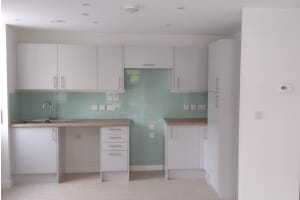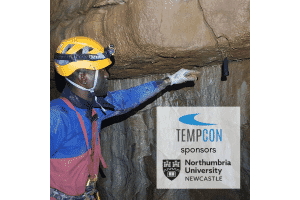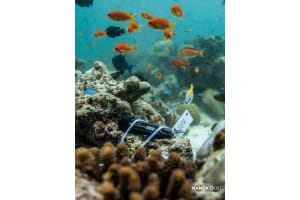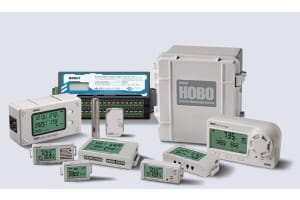New Report to Help Farmers Improve Poultry (Broiler) House Conditions Through Better Ventilation

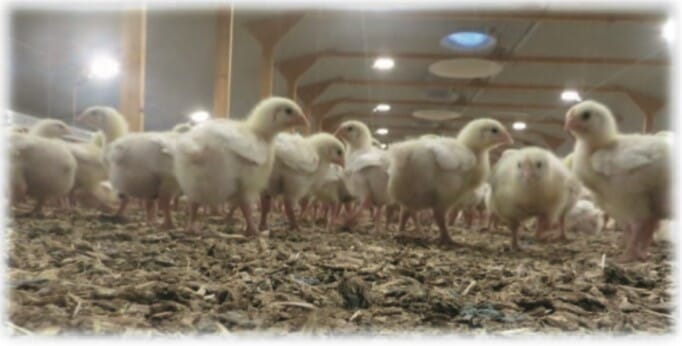
Tesco Future Farmer Foundation Scholarship Winner Christina Hutchings from West Henstill Farm in Devon has just released a new research report: 'Where does all the water go? How a better understanding of Ventilation can be used to improve litter conditions in Broiler Houses'
Christina’s extensive research for the report was conducted in England, Scotland, Denmark, Holland, and the USA.
We are very appreciative of the kind words Christina had to say within the report about Tempcon Sales Engineer, Marc Paterson: “Thank you to Marc Paterson at Tempcon who supplied most of my test equipment to me and helped me hugely throughout the process.”
“Thank you to Marc Paterson of Tempcon, for the endless phone calls over the years, the genuine interest in my project and assistance with the choosing and use of equipment, you have been brilliant.”
The following is an excerpt from pages 45 to 48 of the report
Monitoring Air Quality
Air is a mix of water vapour, carbon dioxide, nitrogen and oxygen as well as small amounts of other gases. Contaminants that are allowed to increase above an acceptable threshold result in poor air quality. Contaminants in the poultry house could be remnants of dried droppings, bacteria and other microorganisms, fungi and viruses together with gases such as carbon dioxide and ammonia. The best to way to minimise all these potential contaminants increasing is to ventilate properly.
What is Ammonia and why is it so bad?
Ammonia is a colourless gas and can only be generated when moisture is present. Moisture is required by the bacteria living in the litter which will be breaking down the uric acid in the manure into the ammonia product which will eventually be let into the air as ammonia. So, if we remove more moisture, we reduce the possibility of this process occurring.
It is internationally accepted that levels of ammonia gas should not exceed 25ppm in our houses. A study from USDA Laboratory in Mississippi found that there was a difference in body weight from birds exposed to 25ppm and 50ppm of 141g per bird... so if you have a house with 30,000 birds, that’s an overall loss of 4,230KG of weight! It is also known that exposure to high ammonia levels can lead to Ammonia blindness and respiratory issues in broilers. It is also unhealthy for us humans to work in these exposure levels. Once again, the answer is, ventilate properly.
Carbon Dioxide
This is something that is proving more and more useful to know. Many vets and processors will expect us to have a sensor or a handheld sensor to check our levels. If you combust your heat within the house itself with oil or gas, then you really should be checking your CO2 levels. If you are not ventilating enough during brooding, even before the chicks arrive you could be causing unnecessarily high CO2 levels before you start.
CO2 meters, if handheld MUST be given time to acclimatise to the new environment. Give it at least 10 minutes before you expect a realistic reading from it.
If you are undergoing an inspection, always make sure the inspector does the same! This is the one I used but there is a huge choice on the market.
Temperature and RH
As we all know, the most important aspect to monitor would be temperature and RH. All farms now have temperature sensors within each house, and most do now have RH sensors too, but for those farmers who don’t have RH sensors installed, read on! The below is also interesting for farmers because of their mobility and ease of installation. I was advised by Mike Czarick to try a data-logger, called a HOBO from a company called Onset. A HOBO is a piece of equipment used to monitor and record both temperature and RH. Onset is a company in the USA, and they have a huge range of equipment suited for poultry housing, and, once you start looking, you’ll find several useful items, that I believe are overall, reasonably priced.
When I started looking for the equipment I wanted for testing, I came across a UK company called Tempcon who supply all this type of equipment which they import. They are very knowledgeable on what they sell and can advise you on what is best. I found them extremely helpful.
An item I found to be one of the most useful was the various data loggers. These are designed to not only take readings such as temperature, RH, water consumption, but will also record this at intervals chosen by you; this is where things get useful as you can not only spot check measurements but collect data over whole crops and analyse the results. Onset also provides completely free software to be used alongside their equipment which is very simple to use, even if you are not a whizz on a PC!
There were two types of HOBO I used for testing. Both are powered by AAA batteries (of which seem to last forever) They are both very compact and both have loops to cable tie them to fix in place. One is a Bluetooth version, which has a sensor within the casing, the other has a cable with a sensor on the end. I found both to be great to use and never had any issues. The only thing I preferred about the Bluetooth one is that you could access and download its data from your phone App, whereas you needed a lead and potentially a laptop to connect and pull data from the other HOBO which was not as quick and easy.
I also found that being able to move the HOBOs anywhere in the house was useful too; you can then check the spots you think may be suffering from a slightly lower temperature than other areas for example.
I tended to choose to install the Bluetooth HOBO on a feeder wire using the loops. I have been advised that you should always install such items nearer the sidewalls of your houses rather than in the middle as the sidewalls are always cooler. I used cable ties to attach them to the feeder drop cable which works well. After some discussion with Mike Czarick and Tempcon I would place the HOBO in a cut-off ladies stocking and tie it in. This is because the dust we accumulate in broiler houses would not do the sensors in the HOBO’s any good, and they still measure the RH and temperature well as the air can travel through the stocking but doesn’t allow the dust to settle on the HOBO. This worked perfectly.
Sensors do need recalibrating though. Everyone has a different opinion on how often, so I am not going to make any judgements. You can sense check your temperature sensors very cheaply by purchasing a few regular old mercury thermometers and fixing them in the house right by the sensor to check they are both the same.
You can also buy an old-fashioned whirling hygrometer to test your RH sensors. They're only around £35 second hand and are 100% accurate and quite neat to use - you literally whirl it round to get your readings. At least then if you can see your electronic sensor and whirling hygrometer are different then you need to get your electronic one off to be recalibrated!
Measuring and Recording Outside
Temperature and RH
I used a HOBO here, the one with a sensor on the end of a cable - this then fits into a weather shield. These items are designed to be used together (both made by Onset).
By using a solar radiation shield you are getting the truest readings from the outside weather conditions since the shield stops direct sunlight etc from being directed straight onto the sensor giving duff readings. Both items are not expensive and will be of use for you on farm.
Download the report, plus three infographics
Equipment Supplied by Tempcon for the Report
Telaire Handheld CO2 Sensor
HOBO UX100-023A External Temp/RH Data Logger
HOBO MX1101 Wireless Temperature & Relative Humidity Data Logger - Optional Remote Monitoring
HOBO RS3-B Solar Radiation Shield
